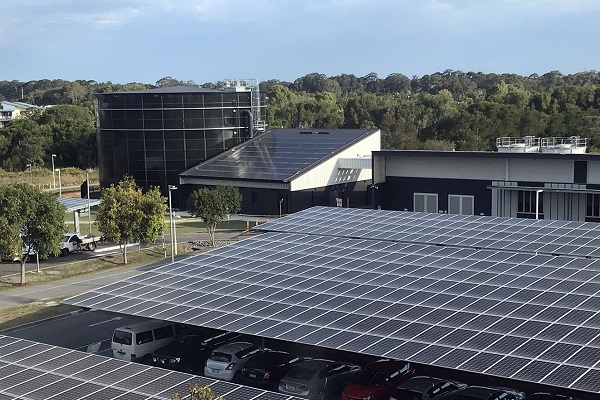Solar-powered ‘water battery’ cuts 4,000 tonnes in emissions
The University of Sunshine Coast (USC) is using a solar-powered ‘water battery’ to save more than 4,232 tonnes of carbon dioxide emissions in its first year of operation.
USC partnered with environmental solutions company Veolia to build a thermal energy storage tank and install more than 6,500 solar panels across campus rooftops and carpark structures. The system was switched on in late August 2019.
ADVERTISEMENT
The systems success was a step towards the university’s goal of becoming carbon neutral by 2025 and proof that regional campuses play a role in innovation.
“USC is the first university in Australia to install a water battery powered by renewables, which is further proof that you don’t need to be in the big cities to do big things,” USC vice-chancellor and president professor Helen Bartlett says.
“In the first full year of operation, the system has generated more than three million kilowatt hours of solar electricity for our Sunshine Coast campus, representing more than 34% of the total electricity required.”
An additional two million kilowatt hours of electricity are fed back into Queensland’s energy grid.
“On top of this, we are tracking our energy savings in real-time and using that information to teach our engineers, designers and leaders of the future about the enormous and cost-effective possibilities in renewable technologies,” Helen adds.
The 2.1MW photovoltaic system produces enough energy to cool 4.5 megalitres of water, effectively acting as an eight-megawatt battery. The cooled water is stored and used for air conditioning, which is currently the single biggest user of electricity at the campus.
According to the university, the savings in CO2 is the equivalent to planting almost 70,000 trees and growing them for a decade.
The project won the won the prestigious Out of the Box category of the Global District Energy Climate Awards in 2019 among strong international competition.
It also recently won the Denis Joseph Award for Innovative Use of Solar Energy in HVAC&R from the Australian Institute of Refrigeration, Air Conditioning and Heating.
-
ADVERTISEMENT
-
ADVERTISEMENT


